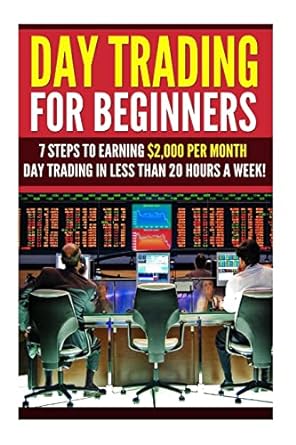Answered step by step
Verified Expert Solution
Question
1 Approved Answer
I know its a lot but please help. I dont need work shown just answers. There is no additional information. Davis, Michaels, and Company Tom
I know its a lot but please help. I dont need work shown just answers. 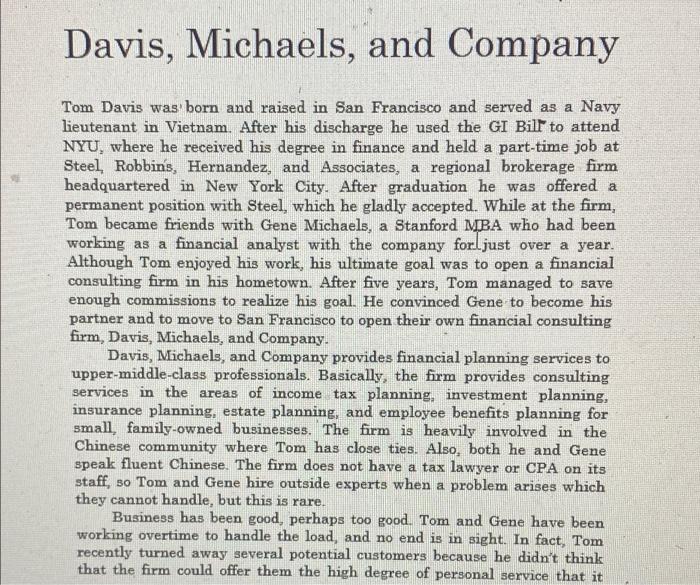
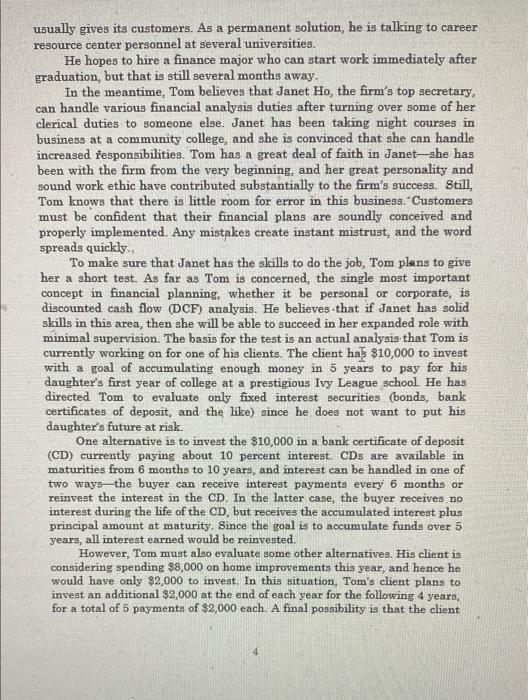
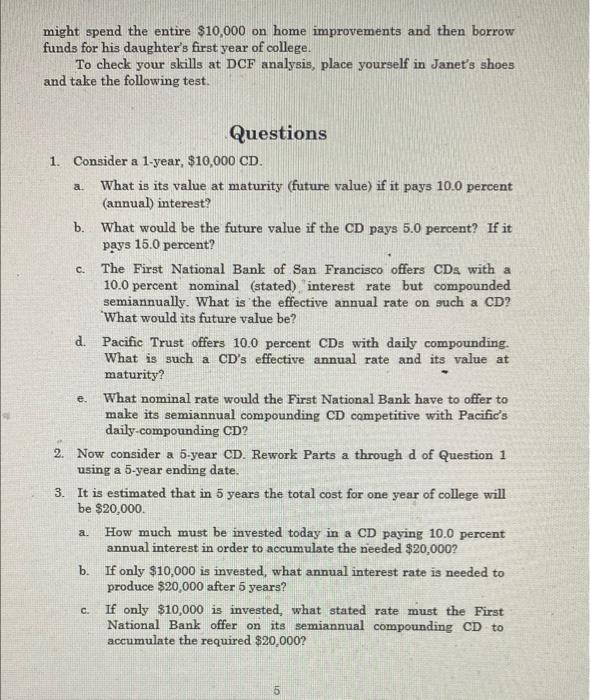
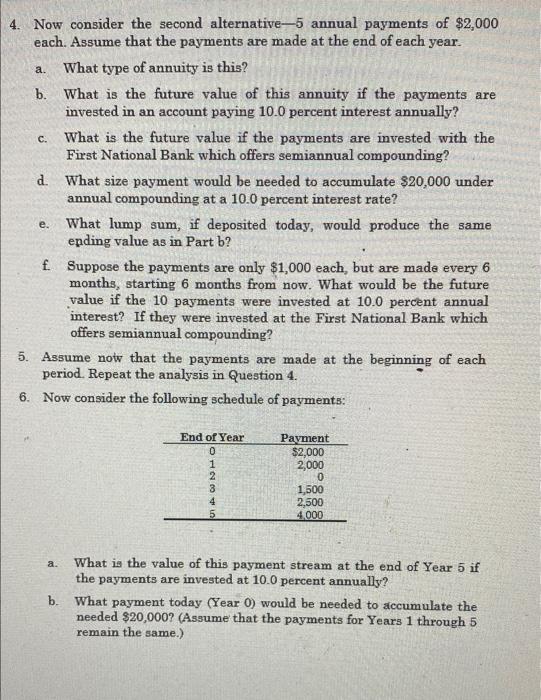
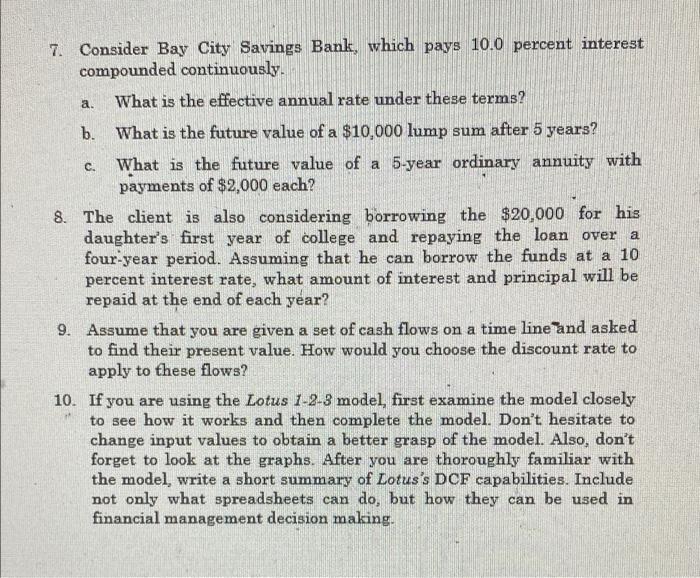





There is no additional information.
Davis, Michaels, and Company Tom Davis was born and raised in San Francisco and served as a Navy lieutenant in Vietnam. After his discharge he used the GI Bill to attend NYU, where he received his degree in finance and held a part-time job at Steel, Robbins, Hernandez, and Associates, a regional brokerage firm headquartered in New York City. After graduation he was offered a permanent position with Steel, which he gladly accepted. While at the firm, Tom became friends with Gene Michaels, a Stanford MBA who had been working as a financial analyst with the company forljust over a year. Although Tom enjoyed his work, his ultimate goal was to open a financial consulting firm in his hometown. After five years, Tom managed to save enough commissions to realize his goal. He convinced Gene to become his partner and to move to San Francisco to open their own financial consulting firm, Davis, Michaels, and Company. Davis, Michaels, and Company provides financial planning services to upper-middle-class professionals. Basically, the firm provides consulting services in the areas of income tax planning, investment planning, insurance planning, estate planning, and employee benefits planning for small, family-owned businesses. The firm is heavily involved in the Chinese community where Tom has close ties. Also, both he and Gene speak fluent Chinese. The firm does not have a tax lawyer or CPA on its staff, so Tom and Gene hire outside experts when a problem arises which they cannot handle, but this is rare. Business has been good, perhaps too good. Tom and Gene have been working overtime to handle the load, and no end is in sight. In fact, Tom recently turned away several potential customers because he didn't think that the firm could offer them the high degree of personal service that it usually gives its customers. As a permanent solution, he is talking to career resource center personnel at several universities. He hopes to hire a finance major who can start work immediately after graduation, but that is still several months away. In the meantime, Tom believes that Janet Ho, the firm's top secretary, can handle various financial analysis duties after turning over some of her clerical duties to someone else. Janet has been taking night courses in business at a community college, and she is convinced that she can handle increased fesponsibilities. Tom has a great deal of faith in Janet-she has been with the firm from the very beginning, and her great personality and sound work ethic have contributed substantially to the firm's success. Still Tom knows that there is little room for error in this business. Customers must be confident that their financial plans are soundly conceived and properly implemented. Any mistakes create instant mistrust, and the word spreads quickly. To make sure that Janet has the skills to do the job, Tom plans to give her a short test. As far as Tom is concerned, the single most important concept in financial planning, whether it be personal or corporate, is discounted cash flow (DCF) analysis. He believes that if Janet has solid skills in this area, then she will be able to succeed in her expanded role with minimal supervision. The basis for the test is an actual analysis that Tom is currently working on for one of his clients. The client has $10,000 to invest with a goal of accumulating enough money in 5 years to pay for his daughter's first year of college at a prestigious Ivy League school. He has directed Tom to evaluate only fixed interest securities (bonds, bank certificates of deposit, and the like) since he does not want to put his daughter's future at risk. One alternative is to invest the $10,000 in a bank certificate of deposit (CD) currently paying about 10 percent interest. CDs are available in maturities from 6 months to 10 years, and interest can be handled in one of two ways-the buyer can receive interest payments every 6 months or reinvest the interest in the CD. In the latter case, the buyer receives no interest during the life of the CD, but receives the accumulated interest plus principal amount at maturity. Since the goal is to accumulate funds over 5 years, all interest earned would be reinvested. However, Tom must also evaluate some other alternatives. His client is considering spending $8,000 on home improvements this year, and hence he would have only $2,000 to invest. In this situation, Tom's client plans to invest an additional $2,000 at the end of each year for the following 4 years, for a total of 5 payments of $2,000 each. A final possibility is that the client might spend the entire $10,000 on home improvements and then borrow funds for his daughter's first year of college. To check your skills at DCF analysis, place yourself in Janet's shoes and take the following test. a. C. Questions 1. Consider a 1-year, $10,000 CD. What is its value at maturity (future value) if it pays 10.0 percent (annual) interest? b. What would be the future value if the CD pays 5.0 percent? If it pays 15.0 percent? The First National Bank of San Francisco offers CDs with a 10.0 percent nominal (stated) interest rate but compounded semiannually. What is the effective annual rate on such a CD? "What would its future value be? d. Pacific Trust offers 10.0 percent CDs with daily compounding. What is such a CD's effective annual rate and its value at maturity? What nominal rate would the First National Bank have to offer to make its semiannual compounding CD competitive with Pacific's daily-compounding CD? 2. Now consider a 5-year CD. Rework Parts a through d of Question 1 using a 5-year ending date. 3. It is estimated that in 5 years the total cost for one year of college will be $20,000. How much must be invested today in a CD paying 10.0 percent annual interest in order to accumulate the needed $20,000? b. If only $10,000 is invested, what annual interest rate is needed to produce $20,000 after 5 years? If only $10,000 is invested, what stated rate must the First National Bank offer on its semiannual compounding CD to accumulate the required $20,000? e. a. C. a. C. 4. Now consider the second alternative5 annual payments of $2,000 each. Assume that the payments are made at the end of each year. What type of annuity is this? b. What is the future value of this annuity if the payments are invested in an account paying 10.0 percent interest annually? What is the future value if the payments are invested with the First National Bank which offers semiannual compounding? d. What size payment would be needed to accumulate $20,000 under annual compounding at a 10.0 percent interest rate? What lump sum, if deposited today, would produce the same ending value as in Part b? f Suppose the payments are only $1,000 each, but are made every 6 months, starting 6 months from now. What would be the future value if the 10 payments were invested at 10.0 percent annual interest? If they were invested at the First National Bank which offers semiannual compounding? 5. Assume now that the payments are made at the beginning of each period. Repeat the analysis in Question 4. 6. Now consider the following schedule of payments: e. End of Year 0 1 2 3 4 5 DUNHO Payment $2,000 2,000 0 1,500 2,500 4,000 What is the value of this payment stream at the end of Year 5 if the payments are invested at 10.0 percent annually? b. What payment today (Year 0) would be needed to accumulate the needed $20,000? (Assume that the payments for Years 1 through 5 remain the same.) a. c. 7. Consider Bay City Savings Bank, which pays 10.0 percent interest compounded continuously. What is the effective annual rate under these terms? b. What is the future value of a $10,000 lump sum after 5 years? What is the future value of a 5-year ordinary annuity with payments of $2,000 each? 8. The client is also considering borrowing the $20,000 for his daughter's first year of college and repaying the loan over a four-year period. Assuming that he can borrow the funds at a 10 percent interest rate, what amount of interest and principal will be repaid at the end of each year? 9. Assume that you are given a set of cash flows on a time line and asked to find their present value. How would you choose the discount rate to apply to these flows? 10. If you are using the Lotus 1-2-3 model, first examine the model closely to see how it works and then complete the model. Don't hesitate to change input values to obtain a better grasp of the model. Also, don't forget to look at the graphs. After you are thoroughly familiar with the model, write a short summary of Lotus's DCF capabilities. Include not only what spreadsheets can do, but how they can be used in financial management decision making Step by Step Solution
There are 3 Steps involved in it
Step: 1

Get Instant Access to Expert-Tailored Solutions
See step-by-step solutions with expert insights and AI powered tools for academic success
Step: 2

Step: 3

Ace Your Homework with AI
Get the answers you need in no time with our AI-driven, step-by-step assistance
Get Started


